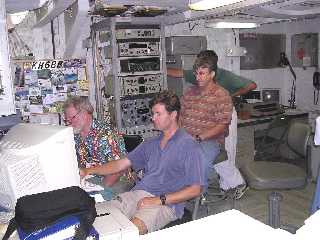
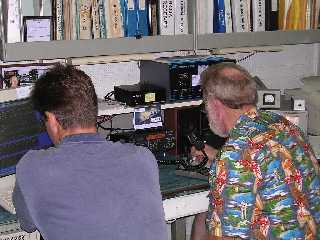
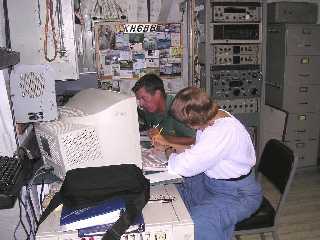

RIGHT: Ned KH7JJ and Ann NH7QS, again.
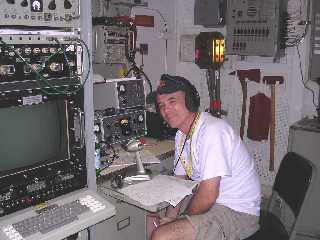
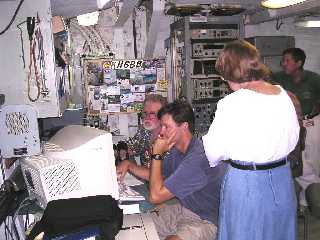
RIGHT: Jim N6PJQ, Dan NH7UX, Ann NH7QS, and Ned KH7JJ.


RIGHT: Dan NH7UX and Jim N6PJQ.
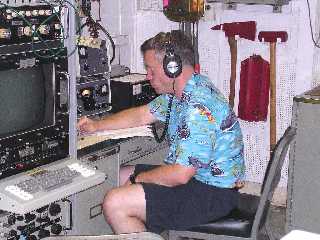

RIGHT: Art WH7N and Jim N6PJQ.

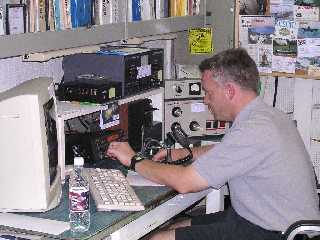
RIGHT: John KS4E.
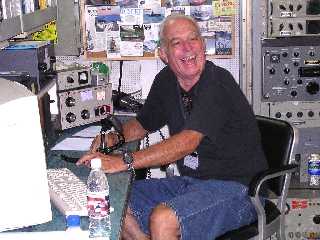
This year we went for a wild ride on Mother Nature's propagation roller-coaster. Just like a roller-coaster does we started at the top, and then things went down and up from there, although generally down. Friday afternoon and evening conditions were very good, and with two high-powered setups on the 20 and 17 meter bands we put over 400 contacts into the logs before the bands closed about 9 PM. We listened on 40 meters after that but didn't hear anything. Saturday morning started out OK but about 0830 a major solar flare hit that knocked us out for a lot of the day. About 4 PM 20 meters started to recover, and we made about 200 more contacts there. Conditions on 17 meters were not nearly as good and we made only a few contacts Saturday evening, even though the beacons indicated the band was open at least to the west coast. Again nothing on 40 meters. Sunday morning 20 and 17 were partly open but propagation was very unsettled with rapid QSB (fading) and much QRN (atmospheric noise), so contacts were difficult all the way up until the end of the event at 2 PM local time.
Again we have provided an unintended live demonstration of why the Navy switched from HF radio to satellites...
Having said all that, our final total was a respectable 712 contacts, compared with 657 HF contacts last year when we did not have a major flare to interrupt us. The new high-power dual operating positions this year were a big help in overcoming the propagation handicap. As the sunspot cycle declines we get less and less use of the higher frequency bands. This year we made 511 contacts on 20 meters, 193 on 17 meters, and only 8 contacts on 15 meters. We worked 46 states missing Delaware, North Dakota, Vermont, and Maine. We worked 31 countries including an unusual number of Europeans (16 contacts in 9 countries). Best DX was probably Oman on the Persian Gulf. We did work five other museum ships including the carrier Yorktown in Charleston SC which was a new one for us. Unfortunately, we did not even hear our sister ship, the New Jersey, all weekend.


